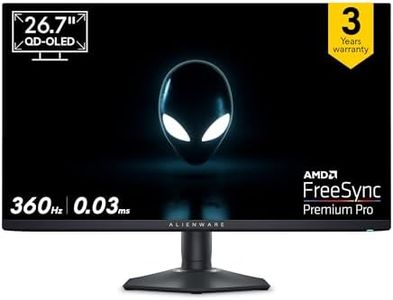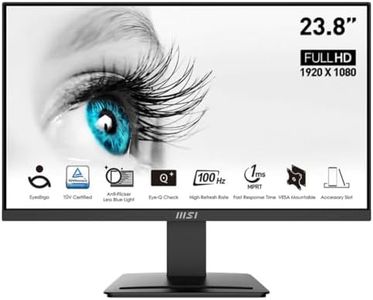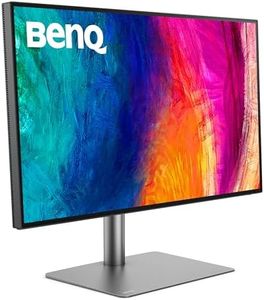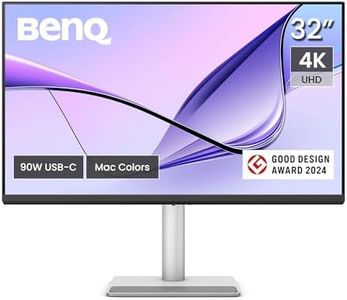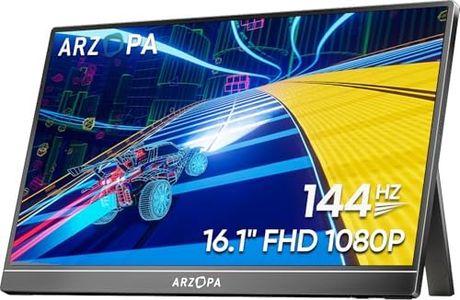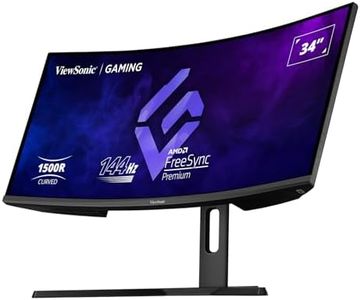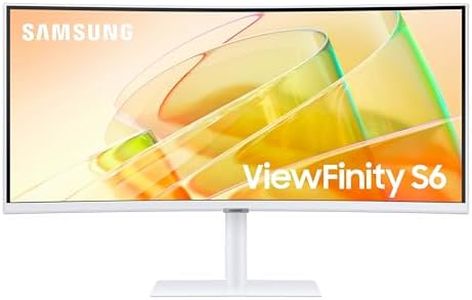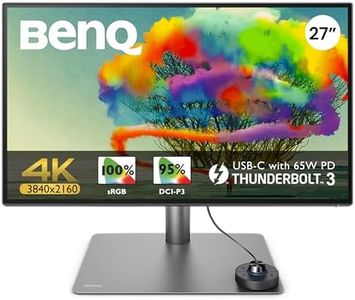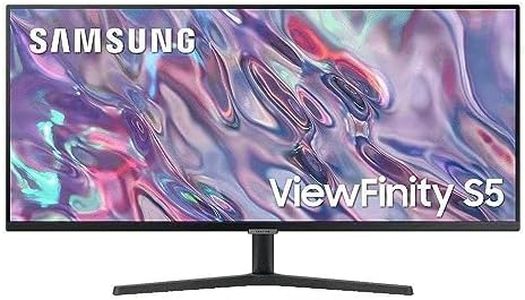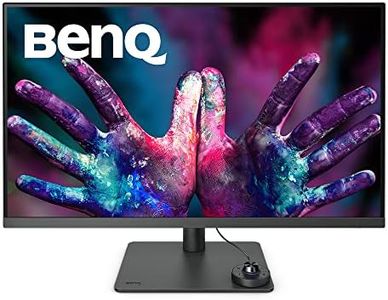We Use CookiesWe use cookies to enhance the security, performance,
functionality and for analytical and promotional activities. By continuing to browse this site you
are agreeing to our privacy policy
10 Best Mac Compatible Monitors
From leading brands and best sellers available on the web.Buying Guide for the Best Mac Compatible Monitors
Choosing a Mac-compatible monitor is about more than just finding a screen that turns on when you plug it in. You’ll want to think about how you work, the look you prefer, and the tasks you’re tackling – whether it’s creative design, programming, or general productivity. Understanding the most important features will help you select a monitor that connects smoothly to your Mac, gives you the experience you expect, and supports your workflow without hassle.ResolutionResolution refers to how many pixels a monitor displays on the screen, which directly affects sharpness and detail. The higher the resolution, the crisper everything looks. For Mac users, especially those doing design, photo work, or who are used to high-resolution Retina screens, a higher resolution (like 2560x1440 or 4K) helps ensure text and images are clear. For general office work, full HD (1920x1080) can be enough, but for creative tasks and multitasking, higher resolutions make a significant difference. Think about what you view most – if you stare at spreadsheets or read lots of text, higher resolution can reduce eye strain over time.
Panel TypeMonitors come with different panel types, such as IPS, VA, or TN. IPS panels offer better color and viewing angles, making them ideal for creative or office use, while TN panels respond faster but can suffer from weaker colors and limited angles – better for fast-paced gaming. VA panels are a middle ground with good contrast. If you need color accuracy or like to move around your workspace, choose IPS. For basic or budget tasks where color isn’t top priority, TN may suffice.
ConnectivityConnectivity is all about the types of ports on the monitor and how easily it connects to your Mac. Modern Macs often use USB-C/Thunderbolt, which can deliver video, power, and even data over one cable. HDMI and DisplayPort are common too, but you may need adapters. For the smoothest experience, look for monitors with USB-C/Thunderbolt support, as these simplify setup and charging. If your Mac is older, make sure the monitor supports the right port (Mini DisplayPort, HDMI) for your machine. Consider the future when you’ll upgrade devices too.
Refresh RateRefresh rate indicates how many times per second the monitor updates its image, measured in hertz (Hz). Most everyday tasks look fine at 60Hz, which is the standard. Higher rates (like 120Hz or 144Hz) make motion smoother and are noticeable in fast action, such as video editing or gaming. For most office or creative work, 60Hz is suitable, but if you edit video, play games, or just love ultra-smooth scrolling, consider higher refresh rates.
Color Accuracy and GamutColor accuracy describes how true a monitor’s colors are compared to real life, while color gamut refers to how many colors it can display. Mac users working in photography, video, or design need monitors with high color accuracy and wide gamut (look for terms like sRGB, AdobeRGB, or DCI-P3 coverage). Monitors that cover more of these color spaces show more vibrant and accurate images. For general use, average color is fine, but for visual professionals, prioritize models with high percentages in these standards.
Size and ErgonomicsMonitor size is measured diagonally and affects how much you can comfortably see and do at once. Bigger isn’t always better—space, viewing distance, and preference matter. Sizes from 24 to 27 inches are comfortable for most desks and multitasking, while larger monitors (32 inches and up) offer ultra-wide viewing and can even replace dual-monitor setups. Ergonomics, like height, tilt, and swivel adjustments, matter for comfort during long sessions. Pick a size that fits your workspace and choose a stand that lets you adjust the monitor for the healthiest posture.
Mac CompatibilityIt's important that the monitor you choose is recognized correctly and works well with your Mac, not just physically connects. Some features – like brightness control, True Tone, or high refresh rates – may only work fully with certain macOS versions or select monitors. Check whether the monitor supports features you want to use and if other Mac users have reported good experiences. Reading compatibility notes or community feedback can help ensure you're not surprised by missing features.

